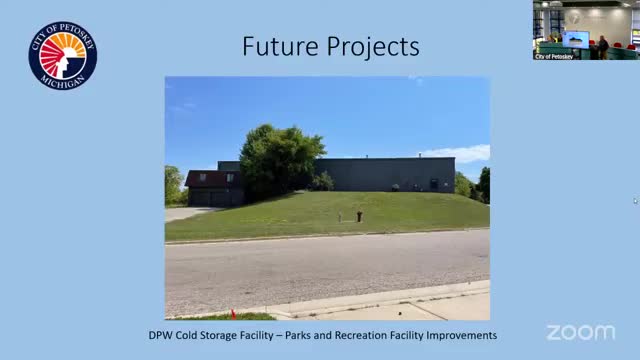City Council reviews $30 million public works and parks upgrade plan
August 13, 2025 | Petoskey City, Emmet County, Michigan
This article was created by AI summarizing key points discussed. AI makes mistakes, so for full details and context, please refer to the video of the full meeting. Please report any errors so we can fix them. Report an error »

In the heart of Petoskey's city hall, council members gathered to address pressing infrastructure needs that could shape the future of the community. The atmosphere was charged with urgency as discussions centered around the city's aging public works facilities and the critical upgrades required to maintain essential services.
Shane, a key speaker at the meeting, highlighted the extensive list of projects outlined in the 20 20 32 plan, emphasizing that the most significant financial burden would stem from necessary renovations to public works and parks and recreation buildings. These facilities, owned by the enterprise fund electric, are in dire need of upgrades, with a staggering estimated cost of $21 million for the public works building alone. The combined total for all projects reaches a daunting $30 million.
The council reviewed images of the current facilities, revealing the deteriorating state of the cold storage facility, which houses equipment for parks and recreation. The public works building, described as "very aged" and increasingly costly to maintain, struggles to accommodate the city's growing needs. The salt barns, too, were shown to be in disrepair, with urgent repairs needed to ensure safety and efficiency.
As the conversation progressed, it became clear that funding remains a significant hurdle. Shane noted that while design concepts have been developed, the council is still exploring funding scenarios before moving forward. "Until we know how we can fund something, I'm not going to bring something to you," he stated, underscoring the cautious approach the council is taking.
The timeline for these projects has shifted dramatically, with initial plans for a public works replacement in 2024 now pushed back to 2031 due to funding challenges. The council is grappling with how to prioritize these essential upgrades while balancing the city's budget.
In a moment of reflection, council members considered alternative building designs, such as clear span structures for the salt sheds. However, Shane explained that these options would not align with the architectural vision for the area and would require more land than currently available.
As the meeting drew to a close, the council's commitment to addressing these infrastructure challenges was evident. The discussions not only highlighted the immediate needs of the city but also set the stage for future planning and investment in Petoskey's public services. With the clock ticking on necessary upgrades, the council's next steps will be crucial in determining how the city can secure the funding needed to revitalize its aging facilities and ensure a sustainable future for its residents.
Shane, a key speaker at the meeting, highlighted the extensive list of projects outlined in the 20 20 32 plan, emphasizing that the most significant financial burden would stem from necessary renovations to public works and parks and recreation buildings. These facilities, owned by the enterprise fund electric, are in dire need of upgrades, with a staggering estimated cost of $21 million for the public works building alone. The combined total for all projects reaches a daunting $30 million.
The council reviewed images of the current facilities, revealing the deteriorating state of the cold storage facility, which houses equipment for parks and recreation. The public works building, described as "very aged" and increasingly costly to maintain, struggles to accommodate the city's growing needs. The salt barns, too, were shown to be in disrepair, with urgent repairs needed to ensure safety and efficiency.
As the conversation progressed, it became clear that funding remains a significant hurdle. Shane noted that while design concepts have been developed, the council is still exploring funding scenarios before moving forward. "Until we know how we can fund something, I'm not going to bring something to you," he stated, underscoring the cautious approach the council is taking.
The timeline for these projects has shifted dramatically, with initial plans for a public works replacement in 2024 now pushed back to 2031 due to funding challenges. The council is grappling with how to prioritize these essential upgrades while balancing the city's budget.
In a moment of reflection, council members considered alternative building designs, such as clear span structures for the salt sheds. However, Shane explained that these options would not align with the architectural vision for the area and would require more land than currently available.
As the meeting drew to a close, the council's commitment to addressing these infrastructure challenges was evident. The discussions not only highlighted the immediate needs of the city but also set the stage for future planning and investment in Petoskey's public services. With the clock ticking on necessary upgrades, the council's next steps will be crucial in determining how the city can secure the funding needed to revitalize its aging facilities and ensure a sustainable future for its residents.
View full meeting
This article is based on a recent meeting—watch the full video and explore the complete transcript for deeper insights into the discussion.
View full meeting
